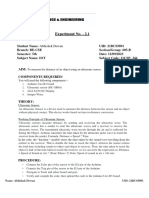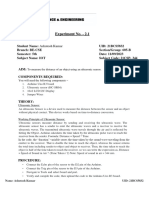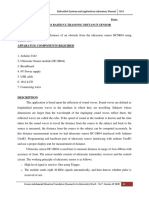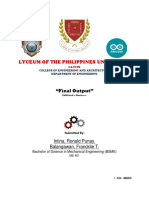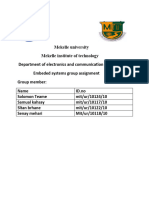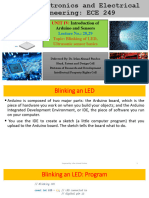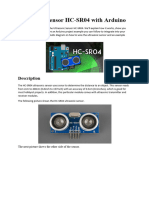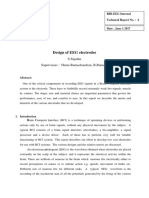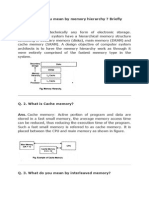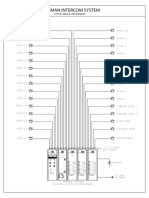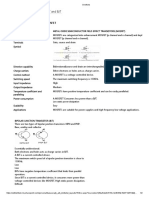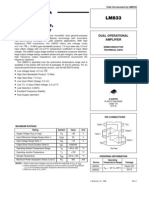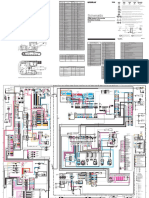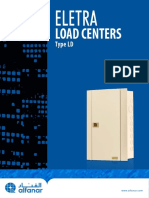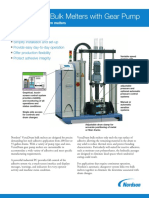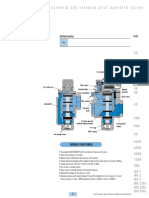0% found this document useful (0 votes)
29 views3 pagesEXP-4 Ultrasonic Sensor Interfacing With Arduino
The document outlines an experiment using an Arduino and an ultrasonic sensor to measure distance. It describes the components needed, the working principle of the ultrasonic sensor, and provides a code example for implementation. Additionally, it includes connection instructions and procedural steps for setting up the experiment.
Uploaded by
EEE digitalCopyright
© © All Rights Reserved
We take content rights seriously. If you suspect this is your content, claim it here.
Available Formats
Download as PDF, TXT or read online on Scribd
0% found this document useful (0 votes)
29 views3 pagesEXP-4 Ultrasonic Sensor Interfacing With Arduino
The document outlines an experiment using an Arduino and an ultrasonic sensor to measure distance. It describes the components needed, the working principle of the ultrasonic sensor, and provides a code example for implementation. Additionally, it includes connection instructions and procedural steps for setting up the experiment.
Uploaded by
EEE digitalCopyright
© © All Rights Reserved
We take content rights seriously. If you suspect this is your content, claim it here.
Available Formats
Download as PDF, TXT or read online on Scribd
/ 3










